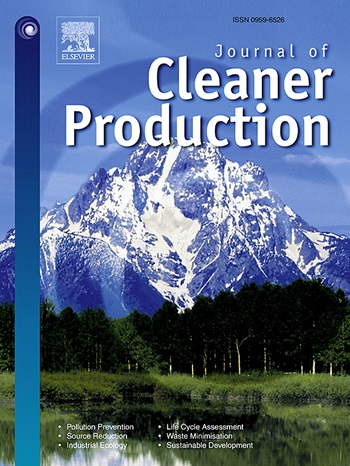Electricity Pinch Analysis Method
IF 9.7
1区 环境科学与生态学
Q1 ENGINEERING, ENVIRONMENTAL
引用次数: 0
Abstract
Under the impetus of low-carbon transition goals in energy and power system, the proportion of new energy sources on the supply side, which are characterized by high randomness, high uncertainty, and the difficulty of long-term forecasting, continues to increase. The planning principles, modeling, and solution methods of new power systems based on classical probability theory and stochastic optimization theory face many challenges, such as poor reliability of planning results, difficulty in interpretation, and low efficiency. The theory of electricity pinch analysis(EPA) is established in this paper based on the basic principles of pinch analysis. The fluctuation characteristics of sources and loads are analyzed in the frequency domain through Discrete Fourier Transform (DFT), and the assessment indicators of "flow" and "quality" of electricity are defined, along with balance equations. The graphical method of EPA is proposed, and the source/sink composite curve is constructed to determine the pinch point that marks the power balance with the minimum demand for thermal power. Sinks and sources are constructed, utilizing the frequency domain characteristics of net load and energy storage, respectively. A planning method of power system source and storage based on EPA is developed and applied to the provincial grids in China. The results indicate that the electricity surplus is 4.23 107, 3.45 107, 3.06 107 kWh in 2021, 2022, and 2023, respectively, with a difference of no more than 4.5% from the actual data. Considering long-duration energy storage reduces the demand for thermal power from 21,882 MW to 20,242 MW. By further categorizing long-term energy storage into three types: 6,000 hours, 720 hours, and 168 hours the storage capacity requirement is halved compared to the scenario with only two types. Thus, the effectiveness of the method is validated, and it may contribute to a paradigm shift in the planning of new power system.电掐分析方法
在能源和电力系统低碳转型目标的推动下,具有高随机性、高不确定性、长期预测困难等特点的新能源在供给侧所占比重持续上升。基于经典概率论和随机优化理论的新型电力系统规划原理、建模和求解方法面临规划结果可靠性差、解释困难、效率低等诸多挑战。基于电夹点分析的基本原理,建立了电夹点分析理论。通过离散傅立叶变换(DFT)在频域分析了电源和负荷的波动特性,定义了电力“流”和“质”的评价指标,并建立了平衡方程。提出了EPA的图形化方法,构建了源汇复合曲线,确定了以最小火电需求为标志的功率平衡点。分别利用净负荷和储能的频域特性构建汇和源。提出了一种基于EPA的电力系统源蓄规划方法,并将其应用于省级电网。结果表明,2021年、2022年和2023年的剩余电量分别为4.23 107、3.45 107、3.06 107 kWh,与实际数据相差不超过4.5%。考虑到长期储能,将火电需求从21,882兆瓦减少到20,242兆瓦。通过进一步将长期储能分为6000小时、720小时和168小时三种类型,与只有两种类型的场景相比,存储容量需求减少了一半。因此,该方法的有效性得到了验证,并可能有助于新电力系统规划的范式转变。
本文章由计算机程序翻译,如有差异,请以英文原文为准。
求助全文
约1分钟内获得全文
求助全文
来源期刊

Journal of Cleaner Production
环境科学-工程:环境
CiteScore
20.40
自引率
9.00%
发文量
4720
审稿时长
111 days
期刊介绍:
The Journal of Cleaner Production is an international, transdisciplinary journal that addresses and discusses theoretical and practical Cleaner Production, Environmental, and Sustainability issues. It aims to help societies become more sustainable by focusing on the concept of 'Cleaner Production', which aims at preventing waste production and increasing efficiencies in energy, water, resources, and human capital use. The journal serves as a platform for corporations, governments, education institutions, regions, and societies to engage in discussions and research related to Cleaner Production, environmental, and sustainability practices.
 求助内容:
求助内容: 应助结果提醒方式:
应助结果提醒方式:


